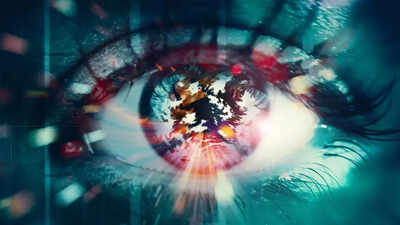Have you ever paused to consider how accurately you perceive the world around you? A groundbreaking study from 2022, published in Science Advances, suggests that our perception of the present might be an illusion. Researchers propose that our brain presents us with a visual representation that is, in fact, up to 15 seconds old. This intriguing discovery, recently featured by Popular Mechanics and UNILAD Tech, indicates that our brains merge past visual information to construct a stable and seamless view of reality. In essence, we may be consistently viewing a carefully edited version of the past, curated by our brains to feel like the present. Let's delve into the mechanisms behind this phenomenon and its implications.

The human brain doesn't process visual information in real-time. Instead, it employs a delay, blending images from the immediate past to create a stable and smooth representation of our surroundings. Scientists have termed this effect a "previously unknown visual illusion," which acts as a shield against the potentially overwhelming chaos of moment-to-moment perception.
This delay is not a flaw but rather a crucial survival mechanism that allows us to navigate a dynamic world filled with constant sensory input. Consider the rapid changes occurring in your environment – blinking lights, shifting shadows, moving objects, or even the quick movements of your own eyes. Instantaneously processing each of these changes would overload the brain.
To prevent this sensory overload, our brains employ a process called serial dependence. This process merges our current visual input with what we perceived moments ago. This results in visual smoothing, which creates the impression of a calm, stable scene. In short, the brain prioritizes tranquility over absolute precision.
The study highlights that our brains might rely on visual snapshots taken up to 15 seconds in the past. Therefore, what we understand as the "present moment" is actually a replayed, edited version of earlier visual information.
This delay serves an important purpose: it helps us function effectively in a constantly evolving environment by preventing cognitive exhaustion. It's a type of biological buffering – as if our brain is constantly editing a video, replaying the last few seconds to ensure continuity. Instead of being a malfunction, this feature provides a significant evolutionary benefit. By focusing on consistency, as opposed to hyper-accurate real-time feedback, the brain enables us to:
In a world characterized by rapid change, this smoothing effect guarantees that our attention is not diverted by every minor alteration in our surroundings.
This discovery brings into question a core concept in mindfulness and philosophy – the idea of being fully present. If our visual reality is rooted in the past, then the "now" we think we inhabit is not truly present. Instead, it is a carefully constructed experience shaped by our brain's memory and predictive capabilities.
This prompts some compelling questions:
You’re seeing the past — and your brain doesn’t want you to know.
Newer articles
Older articles
 Black Caps Set for Blockbuster Home Summer Against Cricket Giants
Black Caps Set for Blockbuster Home Summer Against Cricket Giants
 Elon Musk Calls for ISS Retirement, Citing Mars Focus After $1.25B Allocation
Elon Musk Calls for ISS Retirement, Citing Mars Focus After $1.25B Allocation
 Sharma Reveals Heart-Stopping Moment of Yadav's Game-Changing Catch in T20 World Cup
Sharma Reveals Heart-Stopping Moment of Yadav's Game-Changing Catch in T20 World Cup
 Daren Sammy Fined, Receives Demerit Point for Umpire Criticism After Test Match Controversy
Daren Sammy Fined, Receives Demerit Point for Umpire Criticism After Test Match Controversy
 Smith Aims for Second Test Return After Unique Baseball Cage Recovery
Smith Aims for Second Test Return After Unique Baseball Cage Recovery
 Gujarat Cricket Association Gears Up to Launch T20 League in 2025-26 Season
Gujarat Cricket Association Gears Up to Launch T20 League in 2025-26 Season
 Man City Title Stripping: Unprecedented Chaos Looms for Premier League Amid Financial Allegations
Man City Title Stripping: Unprecedented Chaos Looms for Premier League Amid Financial Allegations
 Ex-India Star Engineer Slams ECB's Pataudi Trophy Renaming, Questions Anderson-Tendulkar Choice
Ex-India Star Engineer Slams ECB's Pataudi Trophy Renaming, Questions Anderson-Tendulkar Choice
 Najmul Hossain Shanto Resigns as Bangladesh Test Captain After Sri Lanka Defeat
Najmul Hossain Shanto Resigns as Bangladesh Test Captain After Sri Lanka Defeat
 Jin's Solo Concert in Korea: A Reunion with ARMY, Surprise Guests, and Electrifying Performances
Jin's Solo Concert in Korea: A Reunion with ARMY, Surprise Guests, and Electrifying Performances